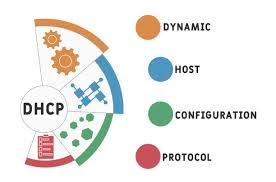Dynamic Host Configuration Protocol (DHCP) is a protocol used by devices linked to the internet to guide the distribution and use of IP addresses. The internet exists heavily regulated by a series of guidelines, principles, and standards generally called protocols. All these protocols are standardized by the IETF (Internet Engineering Task Force). These public standards are critical because they ensure that devices and programs, irrespective of who created them, are compatible with others worldwide.
The Dynamic Host Configuration Protocol is not a program like any other protocol. It exists as a set of standards that lays out the procedures for requesting and sharing IP addresses over a computer network. The DHCP is used when creating address distribution functions.
Dynamic Host Configuration Protocol (DHCP) interfaces between a server and client automatically designate an Internet Protocol address and other data to an Internet Protocol host. The DHCP makes it possible for a host to get the necessary Transmission Control Protocol (TCP/IP) configuration information from the server.
This DHCP server is the server for the given network and can assign IP addresses to the computers interacting on that network automatically. This automatic control of the designation of IP address is a function of the DHCP standard in response to the queries broadcasted by client computers.
DHCP is a network management standard employed in giving out IP addresses to computers and any other device or nodes on a network to foster better communication. Before using DHCP, network administrators were tasked with manually assigning Internet Protocol addresses to all the peripheral devices on a network, exposing the system to errors and placing a tremendous burden on the admins, especially in large networks.
Presently, admins can use the DHCP system in large networks such as those used by campuses, enterprises, Wide Area Network (WAN), etc., and in smaller networks such as residential networks.
DHCP network comprises two components, the central server with the DHCP component installed on it and client instances represented by computers or any internet-enabled device connected to the network. Even when devices change location, DHCP assigns new IP addresses. The DHCP standard has been integrated and can be used in versions 4 and 6 of the Internet Protocol.
Internet Protocol (IP) address is a vital component that one must assign to all devices operating in a Transmission Control Protocol/ Internet Protocol network. DHCP is a set of rules that makes this process easier and less cumbersome.
With or without DHCP, one must assign IP addresses to devices because they contain the information used to accurately direct the transmission of data packets passed across any network. Without DHCP, computers moved to another network will have to undergo manual configuration to assign them new IP addresses. Similarly, the IP addresses assigned to computers that have left the network must be manually retrieved.
DHCP, however, does this entire process automatically. The DHCP server keeps a pool of available IP addresses from which it leases an address to any client on its radar. When using DHCP, the addresses are leased; they are temporarily assigned to a client rather than permanently associated with that device. This dynamic nature of the leased address means that anyone not in use is immediately returned to the pool and can be given to another device.
Using DHCP, organizations can expect the following benefits:
* Internet Service Providers (ISP) use DHCP to assign IP addresses to their users. This method of IP address designation is suitable as not all users are connected to the internet throughout the day. Consequently, addresses can be assigned for the duration of a connection and retained in the pool once the connection is severed.
* DHCP reduces the occurrence of IP conflict to the barest minimum. Because IP addresses are centrally assigned, there are lesser chances of two devices giving the same address or errors in the address.
* DHCP also provides support and easy transition for devices still using the BOOTP standard, which was in place before the Dynamic Host Configuration Protocol
Website link: https://networking-
#protocols #routing #scheduling #servers #gigabit #bandwidth
#topology #ethernet #firewall #fiberoptics #networkdiagram
#bluetooth #networkanalysis #networkmarketing #networkswitch

.png)


No comments:
Post a Comment